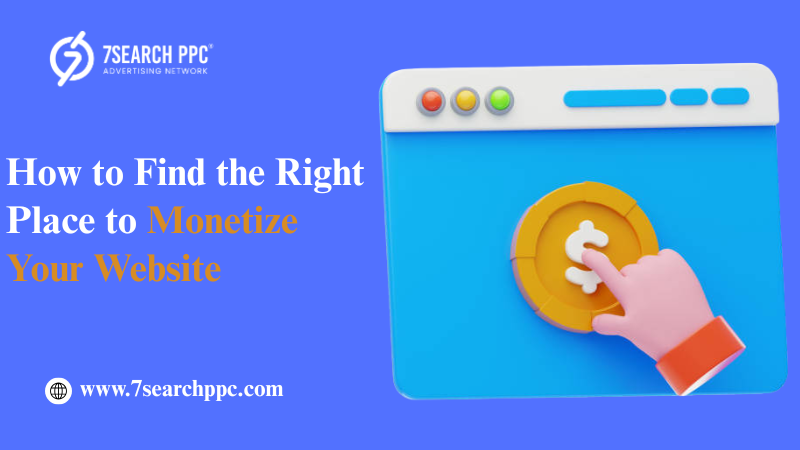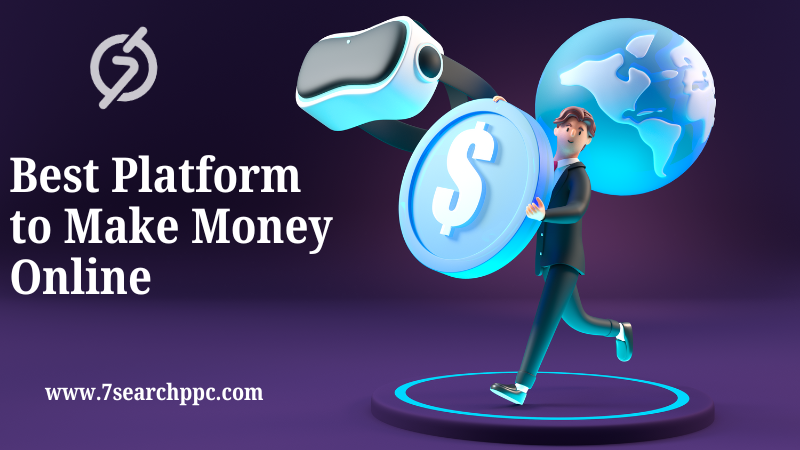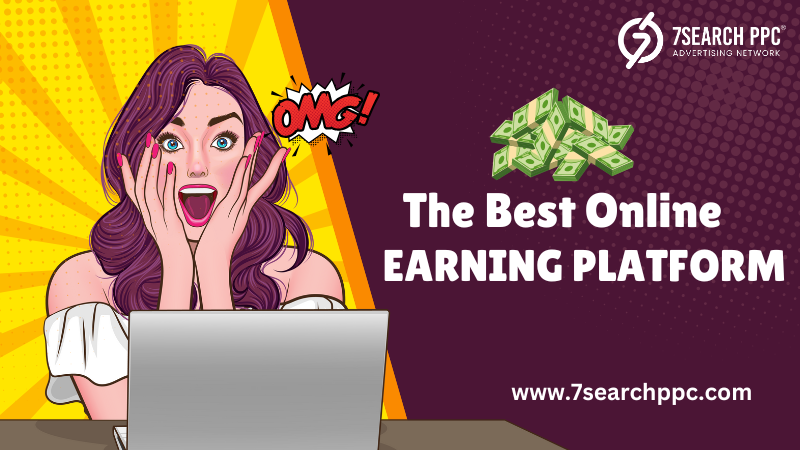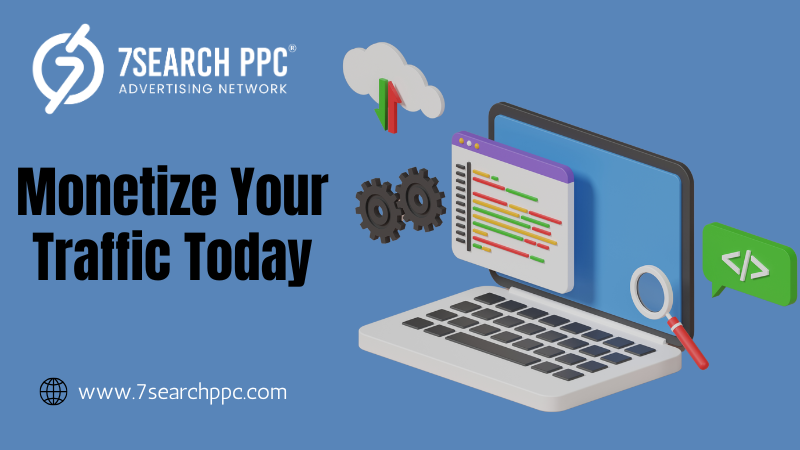
In today’s crowded digital landscape, every website owner’s primary goal is often clear: attract traffic. However, traffic alone doesn’t pay the bills. To truly reap the rewards of your hard work and investment, you need to understand how to monetize a website effectively. Whether you run a blog, an e-commerce store, or a niche informational portal, choosing the right website monetization methods can turn your passion project into a profitable venture.
In this comprehensive guide, we’ll explore various strategies—ranging from advertising networks to affiliate marketing and sponsorships—and help you discover where to monetize your website for maximum revenue. We’ll also delve into specialized platforms like 7Search PPC, and teach you how to sell website traffic or sell website space. Finally, you’ll find a handy FAQ section and a conclusion that ties everything together.
Understanding Website Monetization
Website monetization refers to the process of generating revenue from your website and its audience. With the vast array of traffic-generation strategies at your disposal—SEO, social media marketing, paid advertising, email campaigns—the key question becomes: “Where to monetize websites for optimal returns?” Understanding the various monetization models is the first step toward selecting what works best for your niche and audience.
Popular website monetization methods include:
Display Advertising
Pay-Per-Click (PPC) Campaigns
Affiliate Marketing
Sponsored Content
Selling Digital Products or Services
Subscription & Membership Models
Factors to Consider Before Monetizing
Before diving into monetization, evaluate:
Audience Size & Engagement
Larger, engaged audiences can support display ads and PPC since impressions and clicks translate directly to revenue.
Content Type & Niche
Niches like finance or insurance can command higher ad rates, whereas hobby blogs may find affiliate marketing more profitable.
Traffic Quality & Source
Organic traffic from search engines often converts better in affiliate and subscription models compared to paid traffic.
User Experience
Aggressive ad placements may hurt user experience and SEO. Optimize ad density to balance revenue and usability.
Technical Setup
Ensure your site has fast load times and mobile responsiveness—crucial for both SEO and ad revenue.
Display Advertising Networks
Display ads remain one of the most common ways to monetize website space. They are ideal for sites with moderate to high traffic levels.
Google AdSense
Google AdSense is the most widely used ad network. Benefits include:
Easy integration with existing websites.
Access to Google’s vast pool of advertisers.
Various ad formats: banners, in-feed, matched content, and more.
Drawbacks: Lower RPMs (revenue per thousand impressions) in many niches relative to specialized networks.
7Search PPC
7Search PPC is a cost-per-click advertising network that rivals some of the more established players. Key features:
Customizable Ad Units: Text, display, and contextual ads.
Competitive CPC Rates: Particularly strong in niches like finance, insurance, and legal.
Real-Time Reporting: Detailed dashboard to monitor clicks, impressions, and earnings.
Easy Payouts: Threshold set as low as $10 via PayPal or bank transfer.
7Search PPC can be an excellent alternative or complementary network to AdSense, especially if you’re looking to diversify your ad revenue streams.
Start Making Money From Your Site Now!
Other Alternatives
Media. net: Yahoo-Bing network, strong contextual ads.
PropellerAds: Pop-unders, push notifications, native ads.
AdThrive & Mediavine: Premium networks requiring minimum pageviews but boasting higher RPMs.
Affiliate Marketing
Affiliate marketing involves earning a commission by promoting other companies’ products or services. When your readers purchase through your affiliate links, you earn a percentage of the sale.
Choosing Programs: Major networks include Amazon Associates, ShareASale, 7Search PPC, and Rakuten Marketing.
Integration: Place in-text links, product reviews, comparison charts, or dedicated “best-of” guides.
Tracking & Optimization: Use UTM parameters and affiliate dashboards to track performance and double down on top-converting offers.
Affiliate marketing works exceptionally well on niche blogs and review sites where product recommendations are a natural fit.
Sponsored Content & Direct Sponsorships
For websites with strong authority and engaged audiences, sponsored posts and direct sponsorships are lucrative.
Sponsored Posts: You write (or they provide) content promoting the sponsor’s product or service. You charge a flat fee or per-word rate.
Banner Sponsorships: Sell dedicated banner space—often in the header, footer, or sidebar—to a single sponsor for a fixed period.
Exclusive Partnerships: Longer-term collaborations, such as a monthly “featured partner,” can command premium rates.
To attract sponsors, prepare a detailed media kit showcasing your traffic monetization stats, demographics, and past campaign successes.
Selling Website Traffic & Space
Sometimes, advertisers want to purchase bulk traffic or ad space directly. This involves:
Direct Ad Sales: Reach out to brands in your niche or use platforms like BuySellAds to list your ad inventory.
CPM & CPC Deals: Negotiate CPM (cost per mille) or CPC (cost per click) rates above network defaults.
Private Marketplaces: Set up a programmatic private marketplace (PMP) for higher-tier advertisers seeking premium placements.
Tip: Maintain a clear rate card and media kit. Transparency fosters trust with advertisers and helps close deals faster.
Subscription & Membership Models
If you offer premium content—exclusive articles, in-depth reports, or members-only forums—a subscription model might be ideal.
Paywalls: Use plugins like MemberPress or Restrict Content Pro to gate high-value content.
Tiered Memberships: Offer multiple levels (basic, premium, VIP) with escalating benefits.
Community Perks: Include access to private chat groups, webinars, or personalized consultations.
Subscriptions yield recurring revenue and deepen user engagement.
E-commerce & Digital Products
Selling your own products or courses can yield higher margins than ad-based models.
Digital Downloads: Ebooks, templates, stock photos, printables.
Online Courses & Webinars: Platforms like Teachable or Thinkific let you host and sell courses seamlessly.
Physical Merchandise: Branded swag, books, or tools relevant to your niche.
E-commerce requires robust fulfillment strategies (especially for physical goods) and a streamlined sales funnel.
Choosing the Right Website Monetization Platform
With so many options, selecting the best website monetization platform hinges on your:
Traffic Volume: Ad networks like AdSense and 7Search PPC require high impressions for meaningful revenue.
Niche: Specialized ad exchanges or affiliate programs can yield higher returns in vertical markets (e.g., finance, health).
Technical Capability: Some platforms require code edits or server-side integration.
Revenue Goals: For predictable monthly income, subscriptions and sponsorships often outperform display ads.
A diversified approach—combining ads, affiliates, and products—often yields the most stable revenue.
Optimization & Best Practices
A/B Testing: Continuously test ad placements, affiliate call-to-actions, and pricing models.
Page Speed: Compress images, leverage browser caching, and use a CDN. Speed boosts SEO and ad viewability.
Responsive Design: Ensure ad units and content adapt to mobile screens.
Analytics: Use Google Analytics, affiliate dashboards, and ad network reports to monitor KPIs (CTR, RPM, conversion rates).
Compliance: Disclose affiliate links and sponsored content per FTC guidelines.
Conclusion
Monetizing your website isn’t a one-size-fits-all endeavor. The most successful publishers combine multiple strategies—display advertising via platforms like Google AdSense and 7Search PPC, targeted affiliate marketing, direct sponsorships, and digital product sales—to create diversified income streams. Begin by understanding your audience and niche, then experiment with different monetization models to identify what delivers the highest ROI.
Remember to continually optimize ad placements, refine your affiliate offers, and enhance user experience to sustain long-term growth. By strategically choosing where to monetize your website and employing best practices, you can transform your online presence into a robust revenue-generating asset.







Write a comment ...